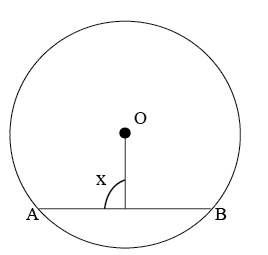11th And 12th > Biology
NEURAL CONTROL AND COORDINATION MCQs
:
C
The transmission of the impulse occurs via release, diffusion, receptor binding of neurotransmitter molecules and unidirectional communication between neurons. Neurotransmitters are released at axon terminals. The axons transmit nerve impulses away from the cell body to a synapse or to a neuro-muscular junction.
:
A
Nodes of Ranvier, also known as myelin sheath gaps, are periodic gaps in the insulating myelin sheaths of myelinated axons where the axonal membrane is exposed to the extracellular space.
:
B
A stroke means that the blood supply to a part of the brain is suddenly cut off. The brain cells need a constant supply of oxygen from the blood. Soon after the blood supply is cut off, the cells in the affected area of brain become damaged or die. A stroke is sometimes called a brain attack.
:
B
The layer of cells which covers the cerebral hemisphere is called cerebral cortex and is thrown into prominent folds. The cerebral cortex is referred to as the grey matter
due to its greyish appearance. The neuron cell bodies are concentrated here giving the colour. The cerebral cortex contains motor areas, sensory areas and large regions that are neither clearly sensory nor motor in function.
:
B
Saltatory conduction (from the Latin saltare, to hop or leap) is the propagation of action potentials along myelinated axons from one node of Ranvier to the next node, increasing the conduction velocity of action potentials.
:
D
There are two types of photoreceptor cells namely Rods and Cones.
1. Cones are concentrated in the center of the retina, contains photopigment called iodopsin. Cones responsible for daylight (photopic) vision and color vision
2. Rods are evenly distributed all over the retina, contains a photopigment called rhodopsin or visual purple, which contain a derivative of Vitamin-A. Rods responsible for twilight (scotopic) vision
And visual acuity not specifically linked to the photoreceptor cells but many different aspects of vision.
So, 4th is the correct differentiation between rod and cone.
:
C
Conduction of impulses in myelinated neurons is faster than unmyelinated neurons. This is because myelin forces the action potential to jump from one node of Ranvier to the next. Na+ channels accumulate in the nodes of Ranvier In large myelinated axons, the conduction can be as much as 100 m/sec, or 220 miles per hour.The propagation speed is slower in small, unmyelinated fibers.
:
C
Ivan Petrovich Pavlov was a Russian physiologist known primarily for his work in classical conditioning. Classical conditioning refers to a learning procedure in which a biologically potent stimulus (e.g. food) is paired with a previously neutral stimulus (e.g. a bell).
:
B
The autonomic nervous system (ANS) is a division of the peripheral nervous system that is entirely motor (a nerve carrying impulses from the brain or spinal cord to a muscle or gland) responsible for control of the bodily functions not consciously directed, such as breathing, the heartbeat, and digestive processes.
:
B
The human ear can respond to minute pressure variations in the air if they are in the audible frequency range, roughly 20 Hz - 20 kHz. It is capable of detecting pressure variations of less than one billionth of atmospheric pressure.
The hertz is defined as one cycle per second. 20Hz means 20 cycles per second. So the audible frequency range for human ear is 20 cycles per second to 20,000 cycles per second. Thus, even if all the options given fall in this range, a human ear is most sensitive to frequencies between 2000Hz to 5000Hz. Hence, option B is correct i.e. 1000cycles/sec

















